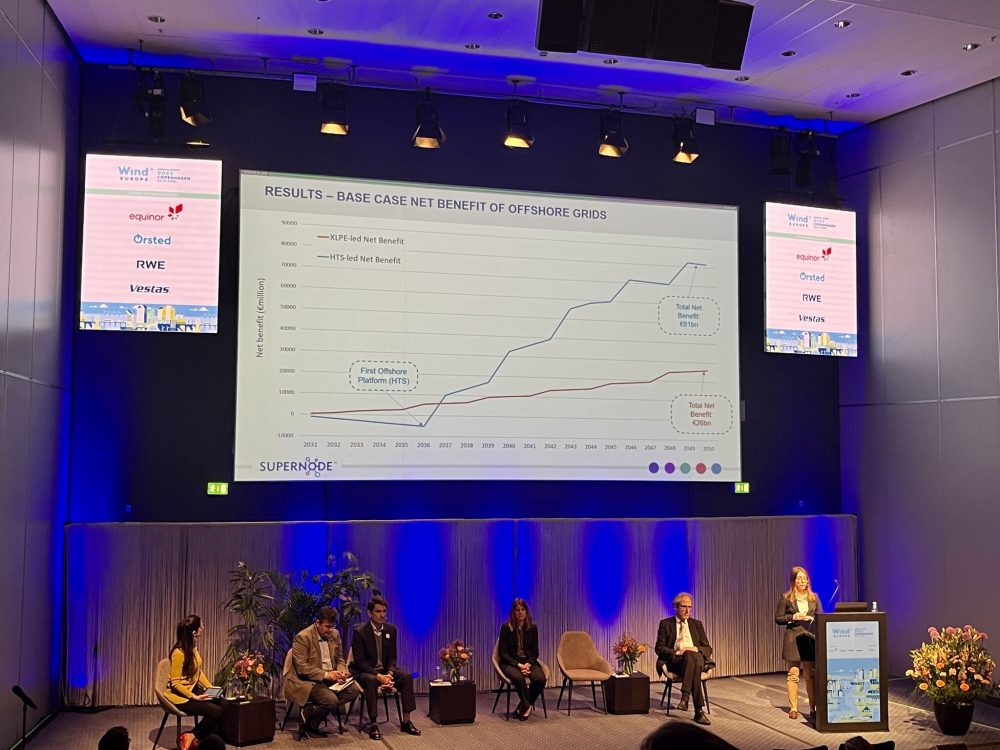
Ms. Maria O’Neill, Technology Analyst at SuperNode Ltd had the honor of presenting at the WindEurope Copenhagen Grid Integration Technology session last week. Their team was excited to participate in such an exceptional event and be among an accomplished panel. The primary discussion focused on grid development, and they had the opportunity to showcase the net gains of developing offshore grid infrastructure in the North Sea with high-capacity superconducting links.

Introduction
The North Sea is a vital center for offshore wind energy development due to its vast potential. Europe aims to increase its offshore wind capacity tenfold by 2050, with most of this capacity expected to come from the North Sea. Thus, developing the necessary offshore grid infrastructure is crucial to meet the growing demand for renewable energy.
High-Capacity Superconducting Links and Their Advantages
High-capacity superconducting links are electrical conductors that transmit massive amounts of electricity with minimal power losses. Using these links in offshore grid infrastructure offers many advantages over traditional cables, such as reduced transmission losses, increased system stability, lower environmental impact, and reduced installation and operating costs.
Challenges in Transporting Superconducting Cables
Transporting superconducting cables, especially for the onshore portion, is a significant challenge due to their weight and the long distances involved. However, to ensure the success of any offshore wind energy project, it is necessary to transport at least 5 kilometers lengths. At SuperNode they are in talks with a Dutch company that has come up with an innovative solution to this problem.

Innovative Solution
We are in discussions with a company that has developed a unique equipment capable of transporting and installing superconducting cables onshore. The piece of equipment capable of transporting cables of 5 kilometer lengths by use of multiaxle trailer combination and install them with minimal disruption to the environment. This solution significantly reduces installation time and costs while having a lower environmental impact than traditional delivery methods.
This all means that the development of offshore grid infrastructure with high-capacity superconducting links offers numerous advantages over traditional cables, including reduced transmission losses, increased system stability, lower installation and operating costs, and lower environmental impact. However, transporting superconducting cables in lengths of 5 kilometer poses a significant challenge. SuperNode is in talks with a Dutch company that has developed an innovative solution that will reduce installation time and costs while having a lower environmental impact.
www.supernode.energy
